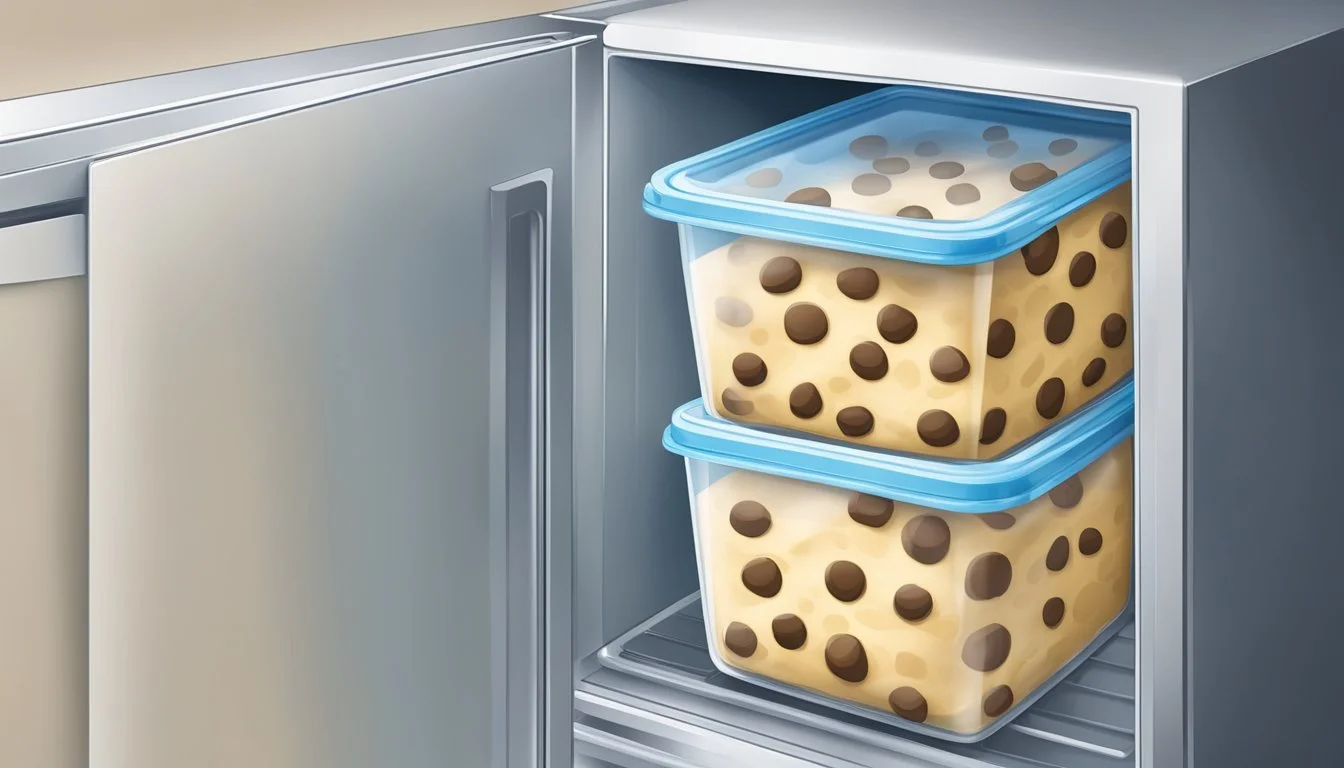Do I Have to Refrigerate Cookie Dough?
Understanding Safe Baking Practices
Refrigerating cookie dough is widely recommended by baking experts and enthusiasts alike. The process, often referred to as 'resting', involves chilling the dough in the refrigerator prior to baking. This step is not merely a suggestion but can be essential for achieving the best texture and flavor in cookies. The science behind chilling dough is straightforward: it gives the fat within the dough, typically butter, time to firm up. This results in cookies that maintain their shape better during baking and do not spread excessively on the baking sheet.
Resting the cookie dough does more than influence physical shape—it also enhances the cookie's overall taste. The sugars in the mixture absorb moisture from other ingredients like flour, leading to deeper flavors upon baking. This interplay of ingredients during the resting period allows for the flavors to meld and become more pronounced. Additionally, the drier, firmer dough promotes caramelization and browning during the baking process, which are key components of the rich flavor and satisfying texture of cookies.
The consensus among culinary authorities suggests that even a brief period in the refrigerator—sometimes as short as 30 minutes—can markedly improve both texture and flavor. However, some recipes benefit from an extended chilling time, with recommendations that can range anywhere from a few hours to several days. The duration of chilling varies depending on the cookies' intended texture and the specific type of cookie dough. Whether aiming for soft and chewy or thin and crispy cookies, refrigeration is a crucial step in the preparation of dough that should not be overlooked.
Importance of Refrigerating Cookie Dough
Refrigerating cookie dough is a crucial step that can significantly affect the final texture and flavor of cookies. This process includes a number of benefits that enhance the baking results.
Texture and Taste Improvements
When cookie dough is refrigerated, the flavors within the dough develop more fully, leading to a more complex and pronounced taste upon baking. Pastry experts note that even a short rest in the refrigerator can enhance the depth of flavor. Additionally, the texture becomes more desirable; refrigerated dough tends to result in cookies that are softer inside due to the control over how much the cookies spread during baking.
Controlling the Spread of Cookies
Chilled dough spreads less in the oven. This is because the butter in the dough hardens when cold, which prevents the cookies from spreading too quickly once they enter the hot oven. This is particularly important for cut-out and rolled cookies, which need to maintain their shape to meet the desired aesthetic and texture.
Hydration of the Dough
Allowing dough to refrigerate provides time for the flour to fully hydrate. The process of hydration means that the flour absorbs moisture evenly, which contributes to a consistent texture throughout the cookie. Cookies made from dough that has been properly chilled are more likely to bake evenly, avoiding overly crisp edges with under-cooked centers.
Incorporating these practices into baking routines can elevate the quality of homemade cookies, offering a greatly improved texture and flavor profile.
Proper Techniques for Refrigerating Cookie Dough
Refrigerating cookie dough is a technique used to improve both the flavor and texture of cookies. Proper storage and chilling methods ensure the best results when the dough is eventually baked.
Wrapping and Storing Dough
Before refrigerating cookie dough, one should tightly wrap it in plastic wrap. This prevents the dough from absorbing odors from the refrigerator and from drying out. For further protection, some bakers may choose to place the wrapped dough inside an airtight container. The dough should be flattened into a disc shape if it requires rolling out later, as this will make it easier to roll after chilling.
Chilling Time Recommendations
The duration for which the cookie dough should be chilled varies depending on the recipe, but a minimum of 30 minutes is commonly recommended. This allows the butter in the dough to harden, which helps prevent the cookies from spreading too much during baking. For more complex flavors and an improved texture, some pastry chefs suggest chilling the dough from anywhere between 24 to 72 hours. Here is an approximate guideline for chilling times:
Short chill (30 minutes to 1 hour): Ideal for a quick firming of the dough.
Medium chill (1-24 hours): Balances the need for flavor development and convenience.
Long chill (24-72 hours): Allows for deeper flavor infusion and an enhanced texture.
Differences Between Refrigerating and Freezing
Refrigerating cookie dough often leads to improved flavor and texture, whereas freezing provides long-term storage. Choosing the right method can affect the dough's consistency and baking results.
When to Freeze
The decision to freeze cookie dough usually comes into play when a baker wants to store it for an extended period. One can freeze most types of cookie dough for three to six months. This method is ideal for bakers who wish to have ready-to-bake cookies on hand without compromising dough quality. The process of freezing may cause the dough to harden, but this does not negatively affect the dough’s baking properties.
Thawing Frozen Dough
Thawing frozen dough should be done with care to preserve its quality. Ideally, it should be moved from the freezer to the refrigerator, allowing it to thaw gradually. A sufficient thawing period ensures the dough returns to a pliable state, suitable for rolling or scooping. It's important not to rush this process, as a uniform temperature throughout the dough is essential for even baking.
Cookie Varieties and Refrigeration
Different cookie varieties often require specific approaches to refrigeration before baking. This process enhances texture, flavor, and shape retention.
Chocolate Chip Cookies
For chocolate chip cookies, refrigeration allows the dough to firm up, preventing excess spreading during baking. The classic Toll House recipe, for example, can benefit greatly from even a short 30-minute chill, resulting in improved texture.
Sugar Cookies
Sugar cookies typically demand refrigeration to ensure that the dough is stiff enough for rolling and cutting. This essential step allows the sugar within the dough to meld with other ingredients, contributing to a desirable golden-brown finish upon baking.
Oatmeal and Peanut Butter Cookies
Doughs for oatmeal and peanut butter cookies often contain ingredients that absorb moisture differently. Refrigerating these doughs can prevent them from becoming too dry or too wet, maintaining a satisfying, chewy texture after baking.
Shortbread and Specialty Cookies
Shortbread and other specialty cookies, such as those with intricate shapes or delicate textures, require refrigeration to hold their form and enhance their flaky, crumbly texture. When baking shortbread, for instance, chilling is necessary to achieve its signature tender bite.
Refrigeration is a pivotal step in cookie baking that varies from one dough to another but is universally important for delivering the best baking results.
Preparing and Baking Refrigerated Dough
Before baking refrigerated cookie dough, one should consider several factors to ensure cookies are evenly baked and have the desired texture and flavor. Adjusting the oven temperature, preparing the baking sheet, and accounting for the impact on baking time are pivotal steps in this process.
Oven Temperature Adjustments
Refrigerated dough generally requires an oven temperature that reflects the recipe's initial instructions; however, some adjustments may be necessary. If the dough has been chilled for an extended period, baking at a slightly lower temperature can prevent the edges from becoming too dark before the center is fully cooked. Conversely, a shorter chilling time may not require any temperature changes.
Sheet Pan Preparation
When preparing to bake, lining the baking sheet with parchment paper or a silicone baking mat is recommended. This not only prevents sticking but also allows for even heat distribution. A chilled dough placed on a cold sheet pan minimizes spreading, contributing to a golden-brown finish and consistent shape.
Impact on Baking Time
The baking time will vary depending on the thickness and size of the cookie dough portions. It's important to note that refrigerated dough may require additional baking time compared to room temperature dough. Cookies should be monitored closely and are usually done when they have a golden-brown color around the edges, signifying a properly baked cookie.
Storage and Food Safety Considerations
When it comes to storing cookie dough, ensuring it remains fresh and safe for consumption involves understanding its shelf life in the refrigerator and how to avoid contamination risks.
Shelf Life in the Fridge
Cookie dough can be safely stored in the refrigerator for several days. Specifically, the dough should maintain its quality for up to 5 days when kept in an airtight container or well-wrapped to prevent drying out. The cool environment of the fridge not only prolongs the shelf life by slowing down bacterial growth but also contributes to the desired texture of baked cookies.
Avoiding Contamination
To minimize the risk of foodborne illness, one should always handle cookie dough with clean hands and utensils. Storing the dough in the fridge requires a resealable bag or an airtight container to shield it from cross-contamination with other foods. This hygienic practice is critical because raw cookie dough often contains uncooked eggs, which could harbor Salmonella if not handled properly.
Crafting the Ultimate Cookie Dough Recipe
Creating the ultimate cookie dough recipe is an art that combines precision with the right blend of high-quality ingredients. The interplay of fats and sugars not only contributes to the flavor but also affects the texture and spread of the cookies. By understanding the roles these components play, one can master the delightful craft of dessert making, particularly in the realm of cookies.
Incorporating High-Quality Ingredients
Choosing the best ingredients for your cookie dough is the first step towards an outstanding result. The type of flour used can manipulate the texture: all-purpose flour is commonly used for its balance in protein content, enabling cookies to hold their shape without becoming too tough. For holiday baking, it might be beneficial to opt for higher quality or even organic options, as they can elevate the flavor of your cookies.
Role of Fat and Sugars
The fat, typically butter, is crucial in cookie recipes, and its state significantly alters the texture. Room temperature butter is ideal for achieving a creamier dough when beaten with sugar. The combination of different sugars, such as granulated sugar for sweetness and brown sugar for a hint of molasses flavor, can deeply affect the final product. Sugars also contribute to the spread and browning of cookies, with recipes sometimes calling for precise adjustments based on desired outcomes. Adding a touch of high-quality vanilla extract imparts an aromatic flavor that complements the sweetness and enriches the overall taste of the cookie.
Tips and Tricks for Home Bakers
Achieving the perfect texture and flavor in cookies is a science that home bakers can master with specific techniques and creative approaches. From enhancing the cookie dough's consistency to exploring new taste combinations, the following subsections provide targeted advice.
Achieving the Perfect Texture
To ensure cookies with an ideal texture, a baker needs to control the dough's firmness and its behavior during baking. The key is refrigeration: chilling the dough before baking. Depending on the recipe, resting times in the fridge can vary typically from 30 minutes to up to 72 hours. A firm dough will spread less in the oven, resulting in thicker, softer, and more consistent cookies. This extended chilling period allows the fats to solidify, reducing the risk of over-spreading which can lead to undesirably thin and crispy cookies. The hydration of the flour during this rest also plays a critical role, as it contributes to an even bake and rich flavor development.
Creative Flavor Pairings
Exploring flavor pairings allows a baker to elevate the culinary experience. A basic cookie dough serves as a blank canvas for incorporating a variety of flavors. Consider the following suggestions:
Classic: Vanilla extract and chocolate chips
Adventurous: Orange zest with cranberry
Decadent: Sea salt with caramel chunks Careful selection of complementary flavors can result in mouthwatering cookies that stand out. The addition of these elements should be balanced to not overwhelm the primary taste of the cookie dough.
Cookie Sandwich Innovations
Cookie sandwiches offer an inventive twist to the traditional cookie, with the texture playing a critical role in the overall experience. A baker should aim for cookies that are sturdy enough to hold their shape when assembled but still soft for a pleasurable bite. To create intriguing sandwich variations, bakers can experiment with different fillings such as:
Classic Cream: A simple buttercream or flavored frosting
Gourmet Spread: Artisanal jams or luxury nut butters
Inventive: Mascarpone with espresso drizzle When constructing a cookie sandwich, maintaining a balance between the cookies and the filling ensures that one does not overpower the other, providing a harmonious blend in each bite.





